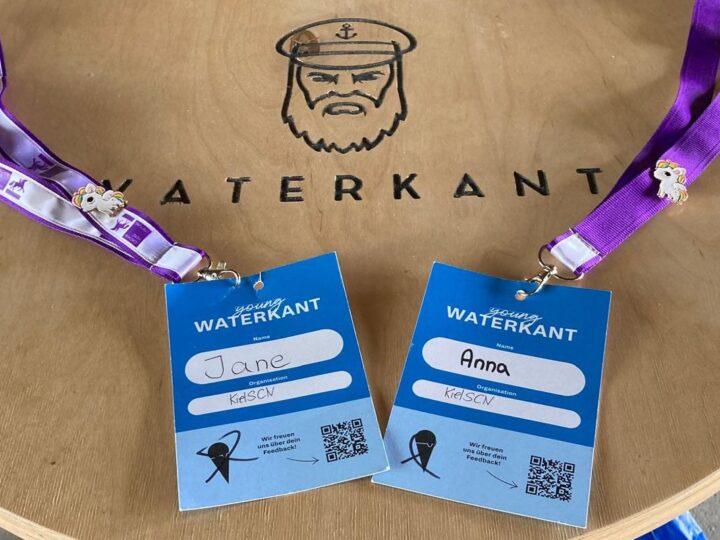VoM #9 – Gaia‘s Stellar Family Portrait
reviewed by Ann-Kathrin Brauer
What is Gaia?
In addition to better-known space telescopes such as the Hubble or the James Webb Telescope, the Gaia Space Telescope has been mapping the Milky Way since December 2013. The goal of the mission is to answer questions about the origin and evolution of the stars in our Milky Way. In the interactive visualization Gaia’s Stellar Family Portrait the European Space Agency (ESA) presents the results of the mission. We have chosen this special “family portrait” as our visualization of the month March.
What happens in the visualization?
By scrolling independently, users are able to let the visualization take effect at their own pace. At the beginning, it is not clearly recognizable what is actually visualized here. All that can be seen is a black patch on a white background. Only when scrolling red info areas appear, which clarify what it is about: roughly 39.5 million stars. Gradually it becomes clear that the black patch we saw at the beginning is only a section, a tiny little part of the Milky Way. Slowly, the black and white image then colors up: hot stars are blue, cold stars are red. And now the visualization also becomes interactive. To bring order to the abundance of stars, 47 so-called clusters are selected. Users can click and explore them.
Further scrolling finally brings more order into the chaos. The 20,000 stars displayed are sorted horizontally according to their color: To the left are the blue hot stars, to the right the red cold ones. This is followed by a further sorting on a vertical axis according to their brightness: particularly bright stars at the top, fainter stars at the bottom. The result is the Hertzsprung-Russel diagram, “the most famous diagram in astrophysics”, John D. Barrow “Cosmic Imagery: Key Images in the History of Science”, 2008).
However, in addition to the luminosity and temperature of a star, which users can read from the diagram, the position of a star in the diagram also tells them something about its age. This becomes clear when users scroll further. As time progresses, the stars begin to move through the diagram. The stars on the so-called main row, meaning the diagonal line in the middle of the diagram, move from there to the upper right into the area of the red giants. Here they stay for a long time before they finally jump to the white dwarf region in the lower left, the final stage of evolution for stars like our Sun.
What makes this visualization beautiful?
The visualization manages to turn a not very exciting diagram into something special. At the beginning, the color scheme is black and white. The more we learn about stars, the more colorful and animated the visualization becomes. The added information and the resulting order are made particularly varied by the animation. This finally culminates in the aging process of the stars as a wandering movement across the screen.
By zooming out the small section of the Milky Way at the beginning, the visualization also creates perspective. In this way, it vividly depicts the size and quantity relationships in our galaxy. Users can lose themselves in this interactive visualization. This “losing oneself” is a feeling described by the emotion “Awe”. Research has shown that it stimulates epistemic behavior and can help to question what is known as well as to close gaps in knowledge.
By triggering “Awe” while inviting knowledge exploration, this interactive visualization is special and thus incredibly enriching. Try it out here!
Videos: @esasciencetechnology7038
About the Visualization of the Month
In our series “Visualization of the Month”, we feature an outstanding visualization on the second Wednesday of each month. One of the criteria for the selection is the extent to which it is aesthetically and emotionally appealing from a design perspective. In addition, we look at the information content. This also includes how the users of the visualization are supported in better comprehending complex contexts. The selection is made within the KielSCN team and involves expertise from the fields of information design, educational science and emotion research, as well as science communication research.



